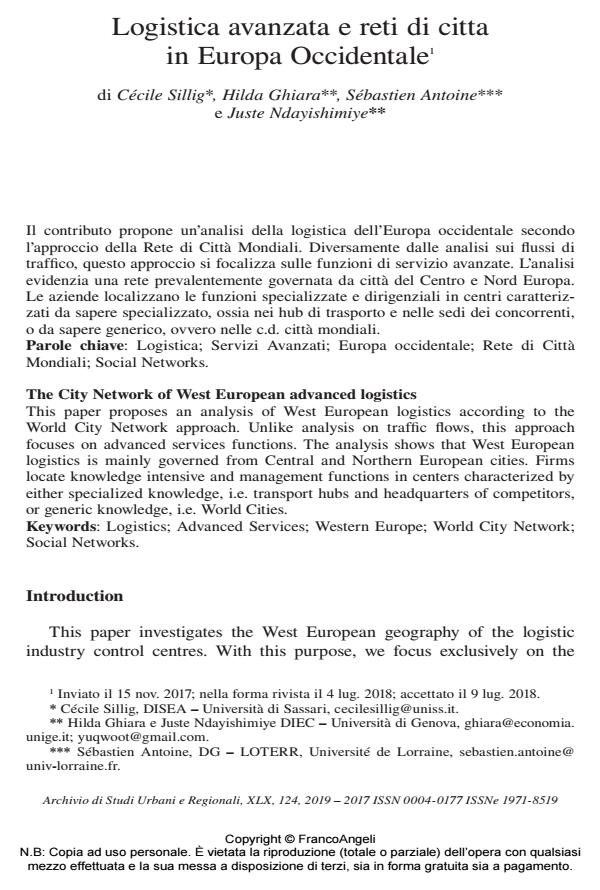The City Network of West European advanced logistics
Journal title ARCHIVIO DI STUDI URBANI E REGIONALI
Author/s Cécile Sillig, Hilda Ghiara, Sébastien Antoine, Juste Ndayishimiye
Publishing Year 2019 Issue 2019/124
Language Italian Pages 26 P. 96-121 File size 185 KB
DOI 10.3280/ASUR2019-124005
DOI is like a bar code for intellectual property: to have more infomation
click here
Below, you can see the article first page
If you want to buy this article in PDF format, you can do it, following the instructions to buy download credits

FrancoAngeli is member of Publishers International Linking Association, Inc (PILA), a not-for-profit association which run the CrossRef service enabling links to and from online scholarly content.
This paper proposes an analysis of West European logistics according to theWorld City Network approach. Unlike analysis on traffic flows, this approachfocuses on advanced services functions. The analysis shows that West Europeanlogistics is mainly governed from Central and Northern European cities. Firmslocate knowledge intensive and management functions in centers characterized byeither specialized knowledge, i.e. transport hubs and headquarters of competitors,or generic knowledge, i.e. World Cities.
Keywords: Logistics; Advanced Services; Western Europe; World City Network;Social Networks.
- Adapter le world city network à la mesure de l’économie régionale. L’exemple du secteur de la logistique en Italie Sébastien Antoine, Cécile Sillig, Hilda Ghiara, Pierre Ginet, in Annales de géographie /2020 pp.81
DOI: 10.3917/ag.735.0081
Cécile Sillig, Hilda Ghiara, Sébastien Antoine, Juste Ndayishimiye, Logistica avanzata e reti di citta in Europa Occidentale in "ARCHIVIO DI STUDI URBANI E REGIONALI" 124/2019, pp 96-121, DOI: 10.3280/ASUR2019-124005